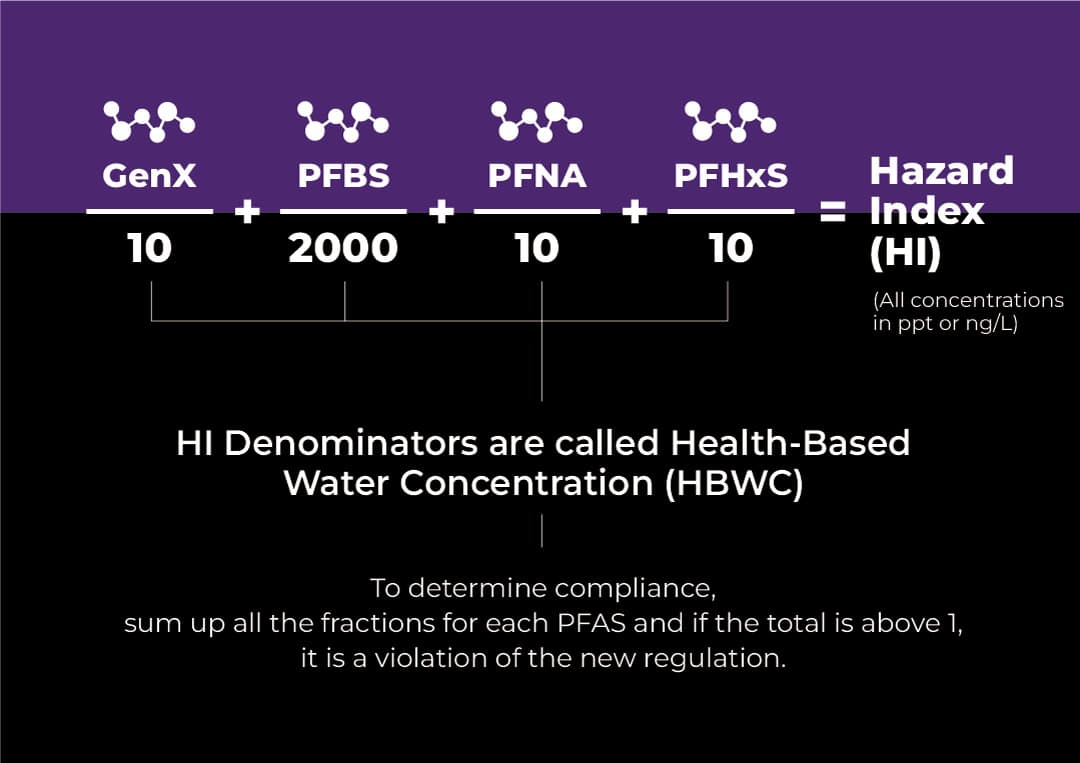Maximum Contaminant Levels (MCLs) in drinking water
The EPA-finalized MCLs are 4.0 parts per trillion (ppt) for PFOA, 4.0 ppt for PFOS, 10 ppt for PFNA, 10 ppt for PFHxS, and 10 ppt for HFPO-DA (GenX) individually. Also, the NPDWR uses a Hazard Index (HI) MCL to limit any mixture containing two or more of PFNA, PFHxS, PFBS, and HFPO-DA. (see table)
Compound
ENFORCEABLE MCL
What is a Hazard Index and How do I Calculate It?
This is the first time a Hazard Index approach has been used for a drinking water regulation but is a common tool used in other types of EPA regulation like the Superfund program, to understand health risk from chemical mixtures. The Hazard Index considers the different toxicities of PFNA, PFHxS, PFBS, and HFPO-DA. For these PFAS, water systems would use a hazard index calculation to determine if the combined levels of these PFAS in the drinking water at each system pose a potential risk and require action.
The Hazard Index is made up of a sum of fractions. Each fraction compares the level of each individual PFAS measured in the water to the highest level determined not to have risk of health effects. The measured value is divided by health-based values for each PFAS and then the fractions are added together for the 4 compounds:
Hazard Index Compound
Health Based Values

Affordable Effective PFAS Treatment Solutions to Comply with this New Regulatory Landscape
The most common water treatment technologies for removing PFAS from water include granular activated carbon (GAC), ion-exchange resin (IX), and high-pressure membranes (Nanofiltration/Reverse Osmosis). All these solutions capture and divert PFAS, creating a concentrated waste stream that will become increasingly challenging to dispose of, at greater costs. Ovivo’s integrated approach combines concentration, destruction, and polishing technologies to ensure a complete, and economically viable solution that destroys all types of PFAS to meet compliance. This integrated solution will reduce both operating costs and offsite liabilities around the disposal of adsorption media such as GAC and single-use IX resins.
With over
150 years of
experience
in water
treatment
Ovivo brings a legacy of expertise and reliability to the table. As a trusted partner, committed to innovation, Ovivo is dedicated to reducing the PFAS treatment burden on municipalities and on industry.